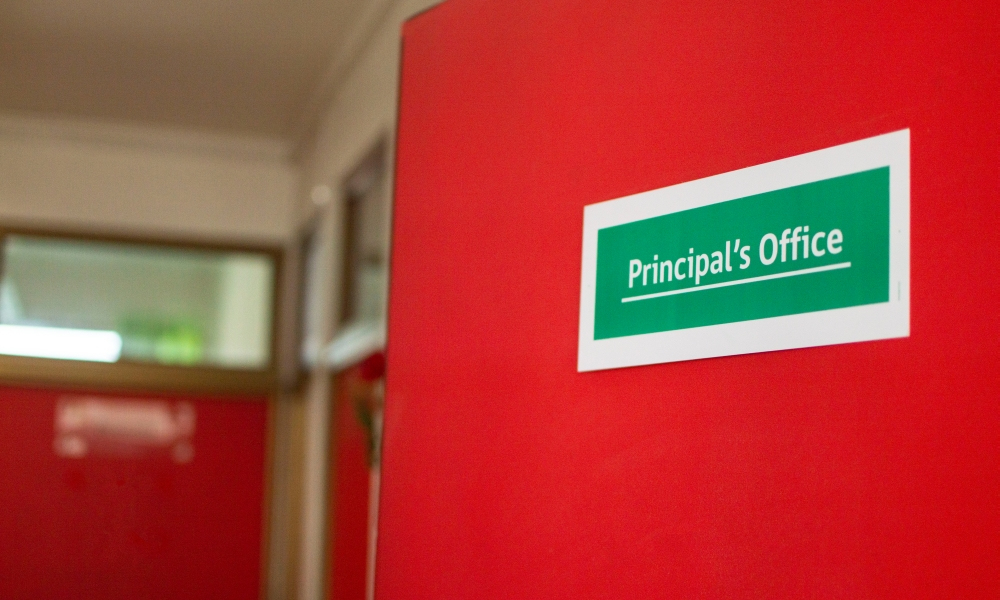School leadership is a complex and demanding role, and navigating change during uncertain times brings added challenges and increasingly difficult decisions. Building strong, purposeful relationships with staff, students and school communities is a trait of highly effective principals (Masters, 2018) – but what happens to that relationship dynamic when expected ways of working suddenly change?
During the COVID-19 pandemic, principals who usually take a collaborative, considered approach to decision making have had to change their modus operandi overnight to one of quick judgements with little or no staff consultation, and communicate mandated change, often at very short notice. How can leaders prepare for and respond to the unprecedented challenge currently facing schools?
Colleagues Dr Amanda Heffernan and Dr Fiona Longmuir are lecturers in Educational Leadership at Monash University in Melbourne – where strict Stage 4 restrictions have once again forced schools to switch to a remote teaching model for the vast majority of students.
Researching the impact on school leaders' work
Longmuir is currently researching how school leaders in Victoria are making sense of the 2020 environment and the impact it's having on their work. ‘What they are learning about themselves and their work, and how they are managing the fast-paced, intense times of change,' she tells Teacher.
Early data show that the leadership practices, arrangements and relationships they had in place prior to the COVID-related changes have been important. ‘Several of the principals that I have spoken with have commented on how the strong relationships that they have with their staff and their communities have been very important in responding to this. The credibility and trust that was in place was really valuable for them moving forward through this time.'
Perhaps unsurprisingly, leaders report that their work has been amplified. ‘Their normal leadership practices and approaches have been put into the highest gear,' Longmuir says. ‘Most of them have told me that they have never worked as hard as they have recently, nor felt the sense of urgency and responsibility as keenly.'
Heffernan says there's a real sense of pressure on everyone in schools at the moment, and that's a worry. ‘Our recent research (Heffernan et al., 2019) showed that we were already reaching really critical points of wellbeing, stress, and effects of teaching. Adding the year we've had so far now, we have real cause for concern about the stress and pressure being faced by our school leaders and everyone involved in education.'
Balancing competing demands
So, how can a crisis like COVID-19 impact a school leader's usual practice? Heffernan says time is a major factor. ‘Difficult decisions are having to be made quickly, with the best information currently available. The usual idea of long periods of consultation aren't possible when the government might, for example, give a couple of days of notice for schools to switch to remote or face-to-face learning.
‘Principals are doing their very best to try to balance the demands of doing the best thing for their students, their staff, and meeting policy and political imperatives and directives. There are real and genuine concerns for people's safety and an enormous number of individual circumstances that leaders are having to consider while trying to find the solution that works best for everyone, under immense pressure.
‘I think what is needed from all sides is an openness and generosity of spirit in recognising that these pressures are incredibly unique, and high-stakes. Clear and open communication is really important, and so is that sense of seeking to understand and support each other to do the best we all can right now.'
Encouragingly, Longmuir says her research indicates teaching staff and families appreciate the new demands placed on school leaders and there is a great deal of support, understanding and trust from the community. ‘This has been a really interesting area of observations in my data, in my opinion,' she explains. ‘Firstly, on the whole, especially the participants that were from [Victorian government] schools felt that the advice and support that was being provided from the education department was timely and helpful.
‘The second really interesting thing that has emerged was that the sense of crisis and urgency enabled a suspension of consultation on the whole, and that school leaders were looked to and trusted to make the best decisions that they could. There seemed to be a real sense of “we are all in this together”.
Regular and honest communication
‘There was also a feeling that communities (families and staff) understood that rapid change had to occur and in every school that my participants came from, there was an acceptance of ongoing working it out and adjustments to arrangements. That is, that everyone was okay that a new arrangement or practice was implemented quickly and without consultation because it had to be, but that school leaders sought feedback and made ongoing adjustments in order to respond to issues that emerged.'
She adds most of the research participants said their relationships with the majority of families and staff members had been strengthened during this period, although this had taken significant effort on their part. Several principals said families regarded them as a key source of information about what was happening – particularly at the start of the crisis in March when the situation was changing so rapidly.
Longmuir says, in connecting with families during this time, leaders made regular and honest communication a priority, and gave constant reassurance and support to those that needed it (with a particular focus on vulnerable students and families). ‘They kept a positive, optimistic and resilient tone to their interactions as they recognised that they were being looked to for leadership through confusion and uncertainty.'
School leaders involved in the study also described the extra effort and attention they have put into support staff – scheduling regular, individual check-ins, organising social events to maintain connections, and listening and responding to personal challenges being experienced. ‘They appreciated that they had some flexibility and autonomy to make arrangements that recognised the different needs of staff as much as possible. They also described needing to balance calm and in control demeanours, with also being honest and sharing vulnerabilities which developed a sense of we are in this together.'
Building a toolkit of strategies
As politicians and health experts have pointed out, there is no playbook for COVID-19 and it's difficult to say what will happen. According to a new report from the Australian Institute of Teaching and School Leadership (2020), being able to successfully navigate challenging times like these requires adaptability and a toolkit of strategies. ‘How do we lead when we can't predict what's going to happen next? Uncertainty requires leaders to adapt quickly to a rapidly changing situation, and to draw on different skills and types of leadership.'
This all comes with experience and principals are constantly learning. Heffernan says leaders naturally evolve and change over the course of their careers as they work in different types of schools and contexts. ‘The most effective thing principals can do is learn from each school they lead and continue to build up their professional knowledge and skills, and grow their support networks, to be able to build up that toolbox of strategies so that they can make the best decision at any given time.' This includes professional learning, engaging with research, and making the most of networks like principals' associations, local school clusters, and former colleagues.
Longmuir agrees leaders are reflective and constantly learning about themselves and their practice. She says the most important consideration for any school leader is context and building those productive relationships. ‘Different leadership styles such as transformational (change focused), instructional/pedagogical (teaching and learning focused) and transformative (change that prioritises equity and social justice) and many more (adaptive, authentic, coaching, distributive …), have been identified in school leaders across the world.
‘However, it is generally accepted that rather than fixed styles we think of leaders as using a range of practices and approaches in ways that are sensitive to their context and with a focus on positive and productive relationships in their school communities. That is, leaders need to have a range of “styles” (i.e. capacity to mobilise different aspects of their practice) and draw on them for specific purposes and in thoughtful and sensitive ways for different purposes as needed in their contexts.'
Health and wellbeing a major challenge
Right now, one of the biggest challenges for schools is the health and wellbeing of staff, students and the community. As Heffernan puts it: ‘Remembering that this is a health crisis – first and foremost people are focusing on keeping everyone safe, and then ensuring that students and teachers are supported as best they can be to find ways to move forward productively into a future that is still really uncertain and changing rapidly.'
Longmuir says principal and teacher wellbeing is a major problem. ‘Leaders and teachers are exhausted. They have given everything to get their schools and communities through this time. I think that they are doing all they can to mitigate these negative impacts on their wellbeing. Leaders described putting in arrangements to try and support staff – for example, not responding to emails at night and tweaking the amounts of time in direct contact with students so that there was time to do other important work.
‘They spoke about finding time for themselves at whatever moments they could – for example, walking while on the phone and blocking out some hours on a Sunday afternoon for a family activity. But there is a sense of “we just have to get through this” – so they are working hard and hoping that they will be able to catch up on self-care once things calm down.'
Despite these negative impacts, Heffernan says there seems to be increased recognition of the hard work that schools do and the way they've navigated these challenges. Longmuir adds her research has uncovered many positives – from developing new home learning technology and innovative ways of teaching, to a shared sense of achievement and sharper focus on what's really important. And, of course, a strengthening of those all-important relationships.
‘This occurred through the deeper connections with families, the strengthening of relationships between staff who were all supporting each other and at another level – several principals reported a strengthening of relationships with their peers across other local schools as they shared resources and ideas.'
References
Australian Institute of Teaching and School Leadership (AITSL). (2020). The role of school leadership in challenging times. Spotlight. https://www.aitsl.edu.au/research/spotlight/the-role-of-school-leadership-in-challenging-times
Heffernan, A., Longmuir, F., Bright, D., & Kim, M. (2019). Perceptions of teachers and teaching in Australia. Monash University. https://www.monash.edu/thank-your-teacher/docs/Perceptions-of-Teachers-and-Teaching-in-Australia-report-Nov-2019.pdf
Masters, G. N. (2018). Principal Performance Improvement Tool. Australian Council for Educational Research (ACER). https://research.acer.edu.au/tll_misc/30
As a school leader, how do you build strong relationships with staff, students and the school community? How have these relationships been impacted by the COVID-19 pandemic? What are the biggest challenges facing your teaching staff?
In the research discussed in this article, several principals reported a strengthening of relationships with their peers. How can you create opportunities to share resources and ideas with other school leaders during this time?



